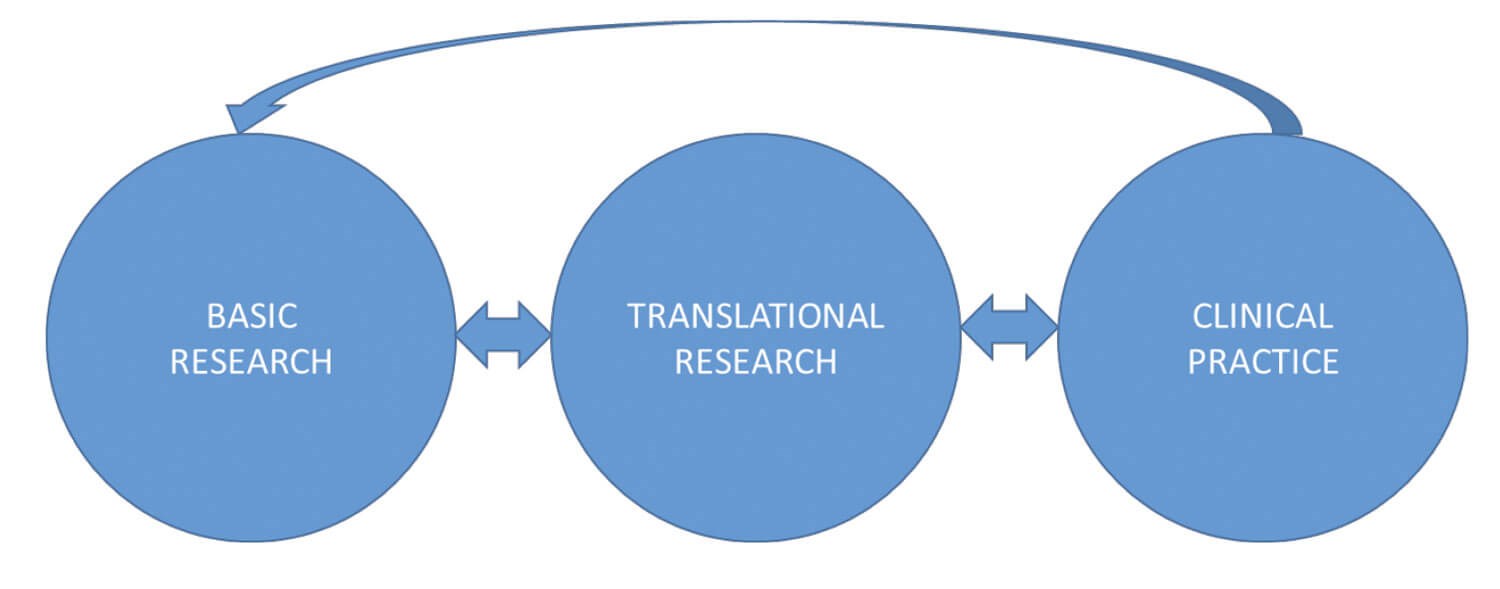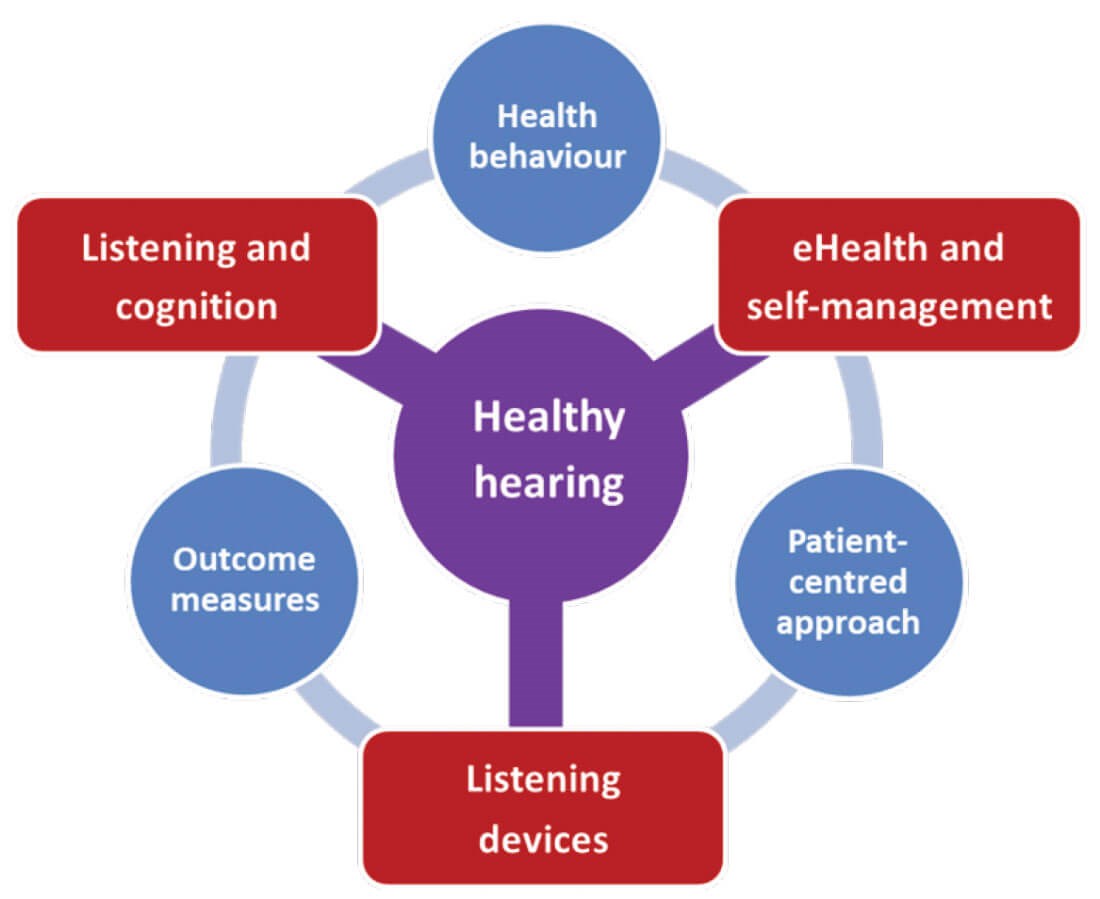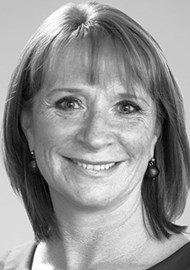A career in research can, at first glance, seem far removed from the clinical world of audiology but is that really the case? In this article Melanie Ferguson explains the role of translational research in bridging this gap, as well as sharing her career pathway from completing an MSc in Audiology in the UK, to working as the Head of Audiological Science at the prestigious National Acoustic Laboratories (NAL) in Australia.
I am writing this article at 35,000 feet as I fly back from Sydney, where I now live, en route to Nottingham where I lived for the last three decades. So what am I doing in Sydney? Four months ago I moved there to take up a position at the National Acoustic Laboratories (NAL) as the Head of Audiological Science, where I am responsible for the Adult Hearing Loss research programme. Even as I write this, I have to pinch myself a little.
It still seems really cool to work where the NAL hearing aid prescriptions were developed, the seminar room is named after Denis Byrne, and where I meet every Tuesday morning with the talented and collaborative NAL leadership team. The fourth-floor view of the sunny, tree-lined Sydney skyline is an added bonus!
Dispelling the mystique around research
So what does a career in audiology research look like? How do you get into research? And what do you need to do to progress a career in audiology research with a leadership role? First off, I think it’s important to say that there is nothing mysterious about research. As with many jobs you just need to have the right knowledge, skills and training to do the job. For me, it’s no different than being a skilled adult rehab or paediatric audiologist. Each professional group – researcher and audiologist – has its own set of skills and knowledge. But there is a middle ground.

Figure 1. Translation of research findings from basic research to clinical practice, and back.
Bridging the gap
Translational research bridges the gap between basic research and clinical practice (see Figure 1). This is where I and other researchers who trained as audiologists sit, with a foot in both camps. The benefits of this are that our understanding of the clinical world helps inform research that has a greater likelihood of leading to patient benefit. This may even extend to informing healthcare policy.
Translational research is not unidirectional. Reverse translation occurs when research questions identified in clinical practice are fed back to translational or basic research to answer the questions that are most important and relevant to both clinicians and patients. One example of this is the work we did to identify the top 10 research priorities for adults with mild to moderate hearing loss (MMHL) in partnership with the James Lind Alliance [1]. Importantly, these priorities were identified in close collaboration with patients, family members, clinicians, professional groups and charities, whose input is now influencing research directions.
Making an impact
My ultimate goal is to lead research that has impact. An example is the Cochrane Review on hearing aids for adults with MMHL [2]. When North Staffordshire Clinical Commissioning Group made the decision in September 2015 to no longer fund hearing aids for adults with MMHL, there was a surprising lack of robust up-to-date evidence on the effectiveness of hearing aids. The resulting Cochrane Review provided this evidence from randomised controlled trials, and showed that hearing aids were effective for listening ability and hearing- and health-related quality of life. The review informed national UK policy via the NICE Guidelines on Hearing Loss, which I also contributed to as a guideline development committee member. The recommendation was to “offer hearing aids to those whose hearing loss affects their ability to communicate and hear…” [3], where ‘offer’ is the highest level of recommendation.
The C2Hear research programme that addresses necessary knowledge and skills required by first-time hearing aid users has also been impactful [4, 5]. The freely available online multimedia videos provide benefits including greater hearing aid handling skills, use and self-efficacy. C2Hear Online has been viewed more than 200,000 times on YouTube in 40+ countries and appears on 30+ UK audiology department websites. These are now also available on a new standalone ‘go-to’ website launched in July (http://c2hearonline.com). Other recent developments include m2Hear for mobile technologies that provide greater individualisation and interactivity.
A career path as a leader in audiology research
There are various career paths – here’s mine. After completing my MSc in Audiology, my career began at the MRC Institute of Hearing Research in Nottingham. I loved it, and gradually increased my research knowledge, skills and experience through on-the-job training. Along the way I had a two wonderful children, Alex and Molly, and took the oft-travelled route of mothers by working part-time for a while. This almost certainly impacted my career development compared to my male peers. However, I am encouraged to see a greater awareness of this nowadays with important charters such as Athena SWAN that promote career progression of women.
By my mid-40s, I was the head of the MRC IHR Clinical Section. My boss, friend and mentor, Dave Moore, suggested I did a PhD and insisted that this was essential if I were to progress my career in research. This was a turning point and led to my becoming an independent researcher where I went on to lead and deliver my translational research programme on MMHL at the NIHR Nottingham Biomedical Research Centre (see Figure 2).

Figure 2. Research programme on mild to moderate hearing loss. Rectangles represent primary research themes. Circles represent underpinning principles.
Throughout, I was an NHS clinical scientist (audiology), which helped make my research clinically relevant, and for a couple of years I was also employed by the University of Nottingham as Associate Professor. I worked with an amazing and productive team who, I am delighted to say, are now progressing their own research careers as independent researchers. And then of course there was the move to NAL, where my research focus is on connected health, service delivery models and outcome measures.
How can you get into research and what training is available?
Over the last decade, there have been increasing numbers of research opportunities for audiologists. In 2008, I chaired the committee that launched the BAA Higher Training Scheme and I developed the Research Module that later became a requirement for clinical scientist registration. Nowadays, there are even more research opportunities as research is seen as key to developing clinical services. Health Education England (HEE) provides pre-doctoral training with their Clinical Scholars schemes for those who wish to pursue research alongside clinical practice. The HEE and NIHR jointly funds the Integrated Clinical Academic Programme that provides research training for non-medical healthcare professionals with pre-doctoral, doctoral and post-doctoral scholarships. The beauty of these is that clinicians maintain their salary. There are also the more traditional routes of doing a PhD (check out FindAPhD.com), as well as research audiologist positions at universities or research institutes.
What do you need to do to progress a career in research?
A PhD is a must. PhD studies are simply a training route that aims to develop independent researchers and, like any qualification, is just one stepping stone on the career path. Post-doctoral positions provide further training in developing research skills and experience. Working within a university environment provides support to those who wish to develop a strong track record of research and an international reputation. For me, developing collaborations with local, national and international researchers, and having leadership roles within professional organisations (e.g. British Society of Audiology, British Academy of Audiology and the Ida Institute) provided additional insights and sharing of expertise.
Looking to the future
There are increasing numbers of women in leadership positions within audiology – just look at this edition! It is also encouraging to see more women in research leadership positions, which are no longer dominated by men of a certain background. This visibility helps counteract ‘you can’t be what you can’t see’. However, research leadership does not happen by chance. A little luck and great mentorship definitely helps, but much of this involves actively seeking and taking opportunities. Don’t be shy. Seek advice. Talk to those in research. Gain experience. Collaborate. If you want to try research, or have a career in research, don’t put it off. If you are interested in research, just do it!
References
1. Henshaw H, Sharkey, L, Crowe D, Ferguson, MA. Research priorities for mild to moderate hearing loss in adults. The Lancet 2015;386:2140-1.
2. Ferguson MA, Kitterick PT, Chong LY, et al. Hearing aids for mild to moderate hearing loss in adults. Cochrane Database of Systematic Reviews 2017;9:CD012023.
3. National Institute for Health and Care Excellence (NICE) Guidelines NG98. Hearing loss in adult: assessment and management.
https://www.nice.org.uk/guidance/ng98
Last accessed July 2019.
4. Ferguson MA, Brandreth M, Brassington W, et al. A Randomized Controlled Trial to Evaluate the Benefits of a Multimedia Educational Programme for First-time Hearing Aid Users. Ear and Hearing 2016;27(2):123-36.
5. Ferguson MA, Maidment DW, Henshaw H, Gomez R. Knowledge is power: improving outcomes for patients, partners and professionals in the digital age. ASHA Perspectives 2019;58(4):1-9.






